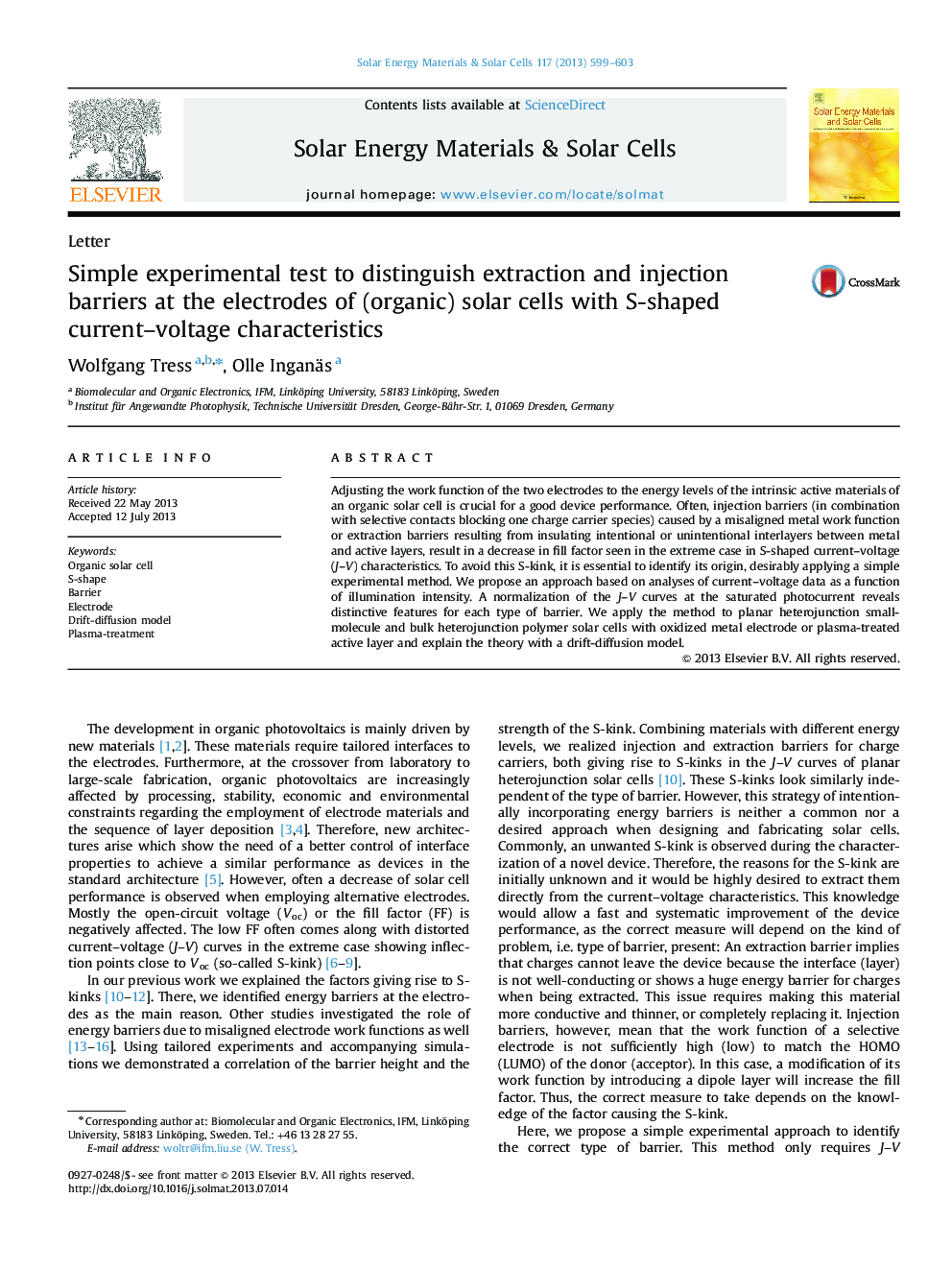| Article ID | Journal | Published Year | Pages | File Type |
|---|---|---|---|---|
| 6536445 | Solar Energy Materials and Solar Cells | 2013 | 5 Pages |
Abstract
Adjusting the work function of the two electrodes to the energy levels of the intrinsic active materials of an organic solar cell is crucial for a good device performance. Often, injection barriers (in combination with selective contacts blocking one charge carrier species) caused by a misaligned metal work function or extraction barriers resulting from insulating intentional or unintentional interlayers between metal and active layers, result in a decrease in fill factor seen in the extreme case in S-shaped current-voltage (J-V) characteristics. To avoid this S-kink, it is essential to identify its origin, desirably applying a simple experimental method. We propose an approach based on analyses of current-voltage data as a function of illumination intensity. A normalization of the J-V curves at the saturated photocurrent reveals distinctive features for each type of barrier. We apply the method to planar heterojunction small-molecule and bulk heterojunction polymer solar cells with oxidized metal electrode or plasma-treated active layer and explain the theory with a drift-diffusion model.
Related Topics
Physical Sciences and Engineering
Chemical Engineering
Catalysis
Authors
Wolfgang Tress, Olle Inganäs,
